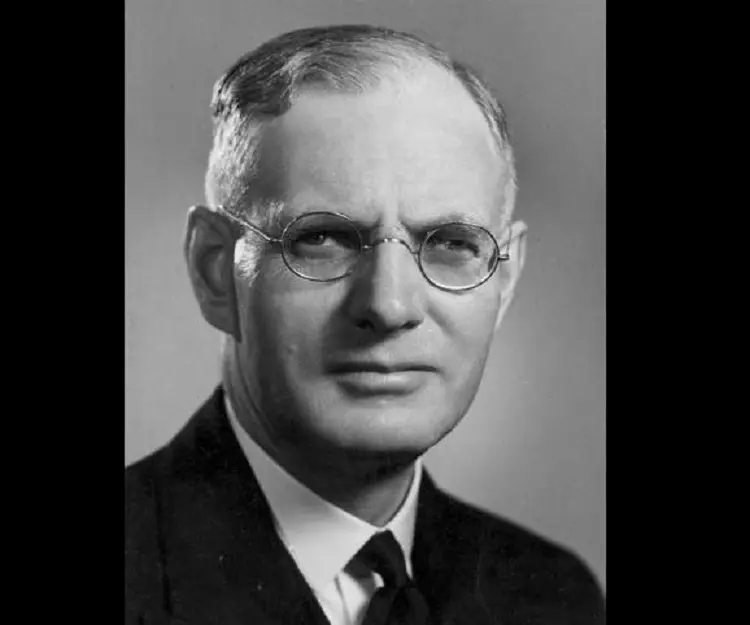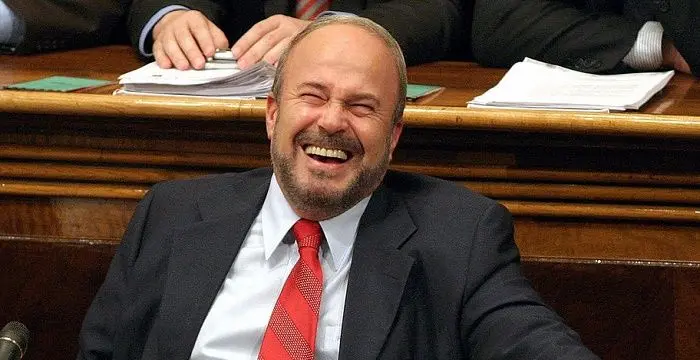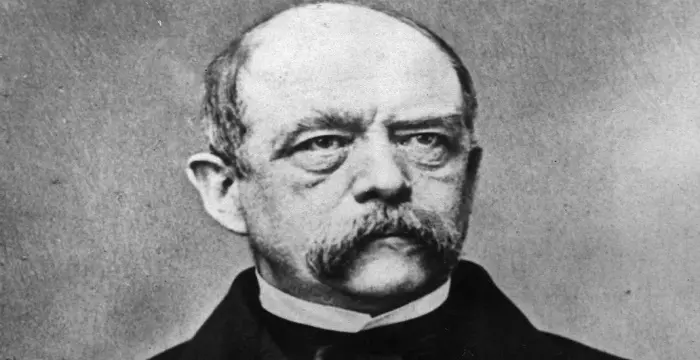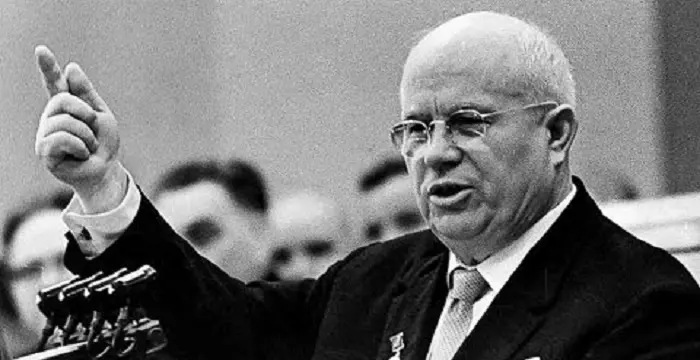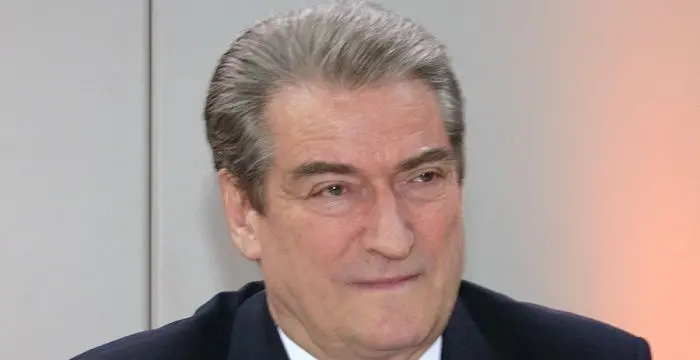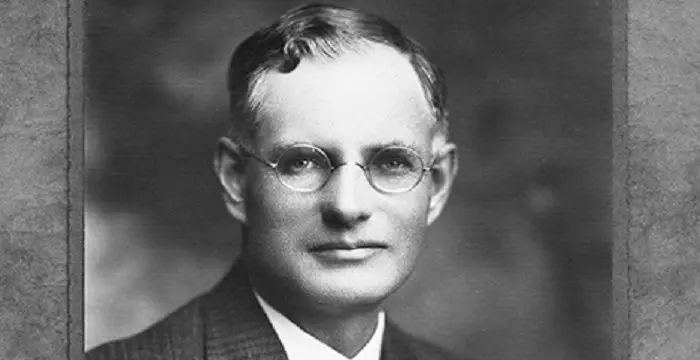
John Curtin - 14th Prime Minister of Australia, Birthday and Childhood
John Curtin's Personal Details
John Curtin was an Australian politician and trade unionist, who rose from the grassroots to become the 14th Prime Minister of the country
| Information | Detail |
|---|---|
| Birthday | January 8, 1885 |
| Died on | July 5, 1945 |
| Nationality | Australian |
| Famous | Leaders, Political Leaders, Prime Ministers, 14th Prime Minister of Australia |
| Spouses | Elsie Needham-Curtin |
| Childrens | John Curtin |
| Birth Place | Creswick |
| Religion | Catholicism, Agnosticism |
| Gender | Male |
| Sun Sign | Capricorn |
| Born in | Creswick |
| Famous as | 14th Prime Minister of Australia |
| Died at Age | 60 |
John Curtin's photo
Who is John Curtin?
John Curtin was an Australian politician and trade unionist, who rose from the grassroots to become the 14th Prime Minister of the country. Although poverty forced him to leave school at the age of 13, he studied at night to educate himself and soon caught the attention of many well-known politicians. Under their influence he turned to socialism and started his political career as the organizing secretary of the Timber Workers' Union, Victoria Branch. His popularity was such that in spite of heavy drinking, his followers and well-wishers never abandoned him. Instead he was appointed as the editor of ‘Westralian Worker’, the official organ of the Western Australian Labor Party. Later, he stood for the election several times and was ultimately elected for the first time in 1928. Within a short period he was made the leader of the party and also the leader of the opposition. Although he had always been a popular leader it were his prime ministerial years during the Second World War, which proved beyond doubt that he was one of the best leaders that Australia ever had.
// Famous Political Leaders
Edi Rama
Edi Rama is the current Prime Minister of Albania. Check out this biography to know about his childhood, life, achievements, works & timeline.
Khalifa bin Zayed Al Nahyan
Sheikh Khalifa bin Zayed Al Nahyan is the current President of the United Arab Emirates (UAE). Check out this biography to know about his birthday, childhood, family life, achievements and fun facts about him.
Leo Varadkar
Cam Leo Varadkar is the current Taoiseach—the Prime Minister—of the Republic of Ireland. Check out this biography to know about his childhood, family life, achievements and other facts about his life.
Childhood & Early Years
John Curtin was born on 8 January 1885, at Creswick, Victoria to John Curtin and Catherine Agnes, née Bourke. Both his parents were of Irish origin. John was the eldest of his parents’ four children.
At the time of his birth John Sr. was policeman at Creswick. When John was five years old ill heath forced his father to leave his job. Later the family settled in Brunswick in poverty. Although he was a good student he left school and took up employment at the age of thirteen.
He began as a copyboy at The Age newspaper. Later, he worked as a page boy in a city club, a printer's assistant on Rambler and a laborer at a pottery. Finally, in 1903, he got a steady job and was employed as an estimate clerk at the Titan Manufacturing Company at a salary of £2 per week.
While working during the day his nights were spent studying at the Public Library. Political works interested him most; but he also liked poems and novels. Football also interested him a lot and between 1903 and 1907, he played for Brunswick.
Career
John Curtin developed an interest in politics early in his life. In 1902, he met Frank Anstey, a member of East Bourke Boroughs. Under Anstey’s influence, he turned to socialism. He became a member of Brunswick Labor Party and began to attend ‘Sunday Morning Study Circle’.
By 1906, Curtin also met Thomas Mann of Victorian Socialist Party and began to attend his ‘Economic Study Circle’. He also began writing for ‘Socialist’, a paper edited by Mann. In 1909, he became the honorary secretary of V.S.P.
In February 1911, Curtin became the organizing secretary of the Timber Workers' Union, Victoria Branch. Immediately he began consolidating scattered groups and started campaigning for better working conditions.
In 1912, Curtis reestablished the Union’s Tasmania Branch. From February 1913, he began publishing ‘Timber Worker’. It not only acted as a medium for promoting socialist propaganda, but also played an important part in steering industrial agitation.
In 1914, Curtin became the first Federal President of Timber Workers’ Union and sat on the Trades Hall Council's disputes committee. This was also the year when he began campaigning for Workers’ Compensation Act (1914) and stood unsuccessfully for the seat of Balaclava in the House of Representatives.
When the World War I broke out, Curtin got involved into anti-conscription movement and was jailed for a short time for refusing to be conscripted. However, during this period, Curtin also took to drinking and the problem became so severe that in November 1915, he had to resign from his post.
He spent most of 1916 in hospital. In spite of that, he was appointed as the editor of the ‘Westralian Worker’, published from Perth, in the beginning of 1917. In the same year, he joined Australian Journalists’ Association and served as its District President from 1920 to 1925.
Meanwhile in 1919, he unwillingly stood for the Federal election from Perth and lost badly. Nonetheless, he continued writing for ‘Westralian Worker’, making it one of the best Labor papers in Australia. Over the years, he also became more moderate in his views and strongly supported Workers’ Educational Association.
In 1924, Curtin was chosen as the Australian delegate to the annual conference of the International Labour Organization at Geneva, Switzerland. Next year in 1925, he stood for federal election from Fremantle, but lost to the incumbent candidate William Watson
However, he won the same seat when Watson retired in 1928 and was reelected in the general election in 1929. Because few legislatures had Curtin’s grassroots experience, it was expected that he would be inducted in the Prime Minister’s cabinet. Unfortunately, he was left out because of his past drinking habit.
His party faced a debacle in the 1931 election. Along with majority of the members Curtin too lost his seat, but won it back in 1934. He spent the intermediary years freelancing for different newspapers. He was also the advocate for the Western Australian Government with the Commonwealth Grants Commission.
In 1935, Curtin was elected the Leader of the Party as well as the Leader of the Opposition by defeating popular MP Frank Forde by just one vote. The faction that supported him made him promise that he would give up alcohol for good and he kept his promise.
That he was a farsighted leader was proved now. On November 5, 1936, he had said that Australia’s dependence upon Great Britain in case of enemy attack was too dangerous a policy. He preached for self-reliance and that the country should have closer link with the U.S.A.
Under Curtin’s leadership the Labor Party won 29 seats in the 1937 federal election and 32 seats in the 1940 election. By then, the World War II had started and the ruling United Australian Party invited Curtin to form a wartime coalition government. He refused the offer, but joined Advisory War Council formed on 28 October.
The UAP government collapsed sometime in the middle of 1941 and on 7 October 1941 John Curtin took oath as the 14th Prime Minister of Australia. He was also the Minister for Defense Coordination.
On December 7, 1941, as the Pacific War broke out, Curtin made a separate declaration of War. He cancelled all leaves, gave call for military training and took up stringent austerity measures. The Australians accepted them gladly because Curtin had made them realize that it was their war.
Simultaneously, he began to look more towards the United States of America for help. In a cable message to President Roosevelt he declared that Australia ‘would gladly accept United States commanders in the Pacific area’. Although it greatly angered Churchill, he did not budge from his stand.
In 1942, he invited General Douglas MacArthur of United States to Australia for setting up a combined force with the aim of repelling the Japanese from the Pacific region. They worked closely for eighteen months and soon Australia became a base from which the Americans launched their counter attack.
He also stood firm and recalled Australian forces from the Middle East in spite of protest from Winston Churchill. Churchill wanted the force to be directed towards the Burma front; but Curtin had them brought home to defend the country in case of possible Japanese attack.
By and by, the Coral Sea battle was won in May 1942, the battle of Midway in June and the battle of Papua at Milne Bay in September. By 1943, the threat of invasion by the Japanese was no longer there. In the 1943, parliamentary election, the Labor party under the leadership of John Curtis won decisive victory in both the houses.
Australia now had to send men to fight the retreating armies beyond her border. Consequently, in order to deploy conscripted soldiers outside of Australia Curtin had to expand the terms of the Defense Act. This he did in the face of immense opposition from his own party.
At the same time, Australia under Curtin began to move closer both to New Zealand and also to the United Kingdom. To the annoyance of the U.S.A, he suggested a lesser role for America after the War. At the same time, he carried on a wide range of progressive reforms.
Major Works
During his tenure, aboriginal Australians were provided with increased welfare benefits, deserted women and widows were provided with pensions, pension for the elderly and sick was increased, child allowance was introduced, and Universities Commission was established etc.
Personal Life & Legacy
In 1917, John Curtin married Elsie Needham. She was the sister of Senator Ted Needham of the Labor Party. The marriage was good for Curtin for it made him comparatively more serene and stable. The couple had two children; a daughter, Elsie, and a son, John.
Curtin had always suffered from stress related illness. In November 1944, he was hospitalized in Melbourne with coronary occlusion. Next in April 1945 his lungs became congested and he was admitted for few weeks in a private hospital at Canberra.
Curtin died peacefully on 5 July 1945 in his home at Canberra. Services and lying-in-state was held in King's Hall on 6 July. His body was then flown to Perth where he was buried at Karrakatta Cemetery on 8 July 1945.
// Famous Leaders
Edi Rama
Edi Rama is the current Prime Minister of Albania. Check out this biography to know about his childhood, life, achievements, works & timeline.
Tecumseh
Tecumseh was a Native American leader of the Shawnee clan. This biography profiles his childhood, life and timeline.
Khalifa bin Zayed Al Nahyan
Sheikh Khalifa bin Zayed Al Nahyan is the current President of the United Arab Emirates (UAE). Check out this biography to know about his birthday, childhood, family life, achievements and fun facts about him.
John Curtin biography timelines
- // 8th Jan 1885John Curtin was born on 8 January 1885, at Creswick, Victoria to John Curtin and Catherine Agnes, née Bourke. Both his parents were of Irish origin. John was the eldest of his parents’ four children.
- // 1902John Curtin developed an interest in politics early in his life. In 1902, he met Frank Anstey, a member of East Bourke Boroughs. Under Anstey’s influence, he turned to socialism. He became a member of Brunswick Labor Party and began to attend ‘Sunday Morning Study Circle’.
- // 1903He began as a copyboy at The Age newspaper. Later, he worked as a page boy in a city club, a printer's assistant on Rambler and a laborer at a pottery. Finally, in 1903, he got a steady job and was employed as an estimate clerk at the Titan Manufacturing Company at a salary of £2 per week.
- // 1903 To 1907While working during the day his nights were spent studying at the Public Library. Political works interested him most; but he also liked poems and novels. Football also interested him a lot and between 1903 and 1907, he played for Brunswick.
- // 1906 To 1909By 1906, Curtin also met Thomas Mann of Victorian Socialist Party and began to attend his ‘Economic Study Circle’. He also began writing for ‘Socialist’, a paper edited by Mann. In 1909, he became the honorary secretary of V.S.P.
- // Feb 1911In February 1911, Curtin became the organizing secretary of the Timber Workers' Union, Victoria Branch. Immediately he began consolidating scattered groups and started campaigning for better working conditions.
- // 1912 To Feb 1913In 1912, Curtis reestablished the Union’s Tasmania Branch. From February 1913, he began publishing ‘Timber Worker’. It not only acted as a medium for promoting socialist propaganda, but also played an important part in steering industrial agitation.
- // 1914In 1914, Curtin became the first Federal President of Timber Workers’ Union and sat on the Trades Hall Council's disputes committee. This was also the year when he began campaigning for Workers’ Compensation Act (1914) and stood unsuccessfully for the seat of Balaclava in the House of Representatives.
- // Nov 1915When the World War I broke out, Curtin got involved into anti-conscription movement and was jailed for a short time for refusing to be conscripted. However, during this period, Curtin also took to drinking and the problem became so severe that in November 1915, he had to resign from his post.
- // 1917In 1917, John Curtin married Elsie Needham. She was the sister of Senator Ted Needham of the Labor Party. The marriage was good for Curtin for it made him comparatively more serene and stable. The couple had two children; a daughter, Elsie, and a son, John.
- // 1919Meanwhile in 1919, he unwillingly stood for the Federal election from Perth and lost badly. Nonetheless, he continued writing for ‘Westralian Worker’, making it one of the best Labor papers in Australia. Over the years, he also became more moderate in his views and strongly supported Workers’ Educational Association.
- // 1924 To 1925In 1924, Curtin was chosen as the Australian delegate to the annual conference of the International Labour Organization at Geneva, Switzerland. Next year in 1925, he stood for federal election from Fremantle, but lost to the incumbent candidate William Watson
- // 1928 To 1929However, he won the same seat when Watson retired in 1928 and was reelected in the general election in 1929. Because few legislatures had Curtin’s grassroots experience, it was expected that he would be inducted in the Prime Minister’s cabinet. Unfortunately, he was left out because of his past drinking habit.
- // 1931 To 1934His party faced a debacle in the 1931 election. Along with majority of the members Curtin too lost his seat, but won it back in 1934. He spent the intermediary years freelancing for different newspapers. He was also the advocate for the Western Australian Government with the Commonwealth Grants Commission.
- // 1935In 1935, Curtin was elected the Leader of the Party as well as the Leader of the Opposition by defeating popular MP Frank Forde by just one vote. The faction that supported him made him promise that he would give up alcohol for good and he kept his promise.
- // 5th Nov 1936That he was a farsighted leader was proved now. On November 5, 1936, he had said that Australia’s dependence upon Great Britain in case of enemy attack was too dangerous a policy. He preached for self-reliance and that the country should have closer link with the U.S.A.
- // 1937 To 1940Under Curtin’s leadership the Labor Party won 29 seats in the 1937 federal election and 32 seats in the 1940 election. By then, the World War II had started and the ruling United Australian Party invited Curtin to form a wartime coalition government. He refused the offer, but joined Advisory War Council formed on 28 October.
- // 7th Oct 1941The UAP government collapsed sometime in the middle of 1941 and on 7 October 1941 John Curtin took oath as the 14th Prime Minister of Australia. He was also the Minister for Defense Coordination.
- // 7th Dec 1941On December 7, 1941, as the Pacific War broke out, Curtin made a separate declaration of War. He cancelled all leaves, gave call for military training and took up stringent austerity measures. The Australians accepted them gladly because Curtin had made them realize that it was their war.
- // 1942In 1942, he invited General Douglas MacArthur of United States to Australia for setting up a combined force with the aim of repelling the Japanese from the Pacific region. They worked closely for eighteen months and soon Australia became a base from which the Americans launched their counter attack.
- // Nov 1944 To Apr 1945Curtin had always suffered from stress related illness. In November 1944, he was hospitalized in Melbourne with coronary occlusion. Next in April 1945 his lungs became congested and he was admitted for few weeks in a private hospital at Canberra.
- // 8th Jul 1945Curtin died peacefully on 5 July 1945 in his home at Canberra. Services and lying-in-state was held in King's Hall on 6 July. His body was then flown to Perth where he was buried at Karrakatta Cemetery on 8 July 1945.
// Famous Prime Ministers
Edi Rama
Edi Rama is the current Prime Minister of Albania. Check out this biography to know about his childhood, life, achievements, works & timeline.
Leo Varadkar
Cam Leo Varadkar is the current Taoiseach—the Prime Minister—of the Republic of Ireland. Check out this biography to know about his childhood, family life, achievements and other facts about his life.
Fatos Nano
Fatos Nano is an Albanian politician who served as Prime Minister of Albania for several times. Check out this biography to know about his childhood, life, achievements, works & timeline.
Otto von Bismarck
Otto von Bismarck served as the Chancellor of Germany and the Prime Minister of Prussia. He unified the German states into a powerful German empire. This biography profiles his childhood, political career, life, achievements and timeline.
Nikita Khrushchev
Nikita Khrushchev was a former Soviet premier. This biography gives detailed information about his childhood, life, achievements and timeline.
Sali Berisha
Sali Berisha is an Albanian politician who served as the President and the Prime Minister of Albania. Check out this biography to know about his childhood, life, achievements, works & timeline.
John Curtin's FAQ
What is John Curtin birthday?
John Curtin was born at 1885-01-08
When was John Curtin died?
John Curtin was died at 1945-07-05
Where was John Curtin died?
John Curtin was died in Canberra
Which age was John Curtin died?
John Curtin was died at age 60
Where is John Curtin's birth place?
John Curtin was born in Creswick
What is John Curtin nationalities?
John Curtin's nationalities is Australian
Who is John Curtin spouses?
John Curtin's spouses is Elsie Needham-Curtin
Who is John Curtin childrens?
John Curtin's childrens is John Curtin
What is John Curtin's religion?
John Curtin's religion is Catholicism, Agnosticism
What is John Curtin's sun sign?
John Curtin is Capricorn
How famous is John Curtin?
John Curtin is famouse as 14th Prime Minister of Australia
